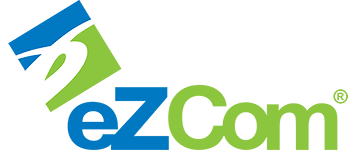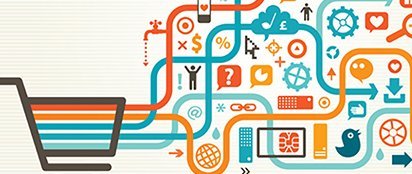Omnichannel Retailing for Suppliers: Setting Yourself Up for EDI Success
By Carol Weidner, CEO, eZCom Software
The omnichannel ideal is quickly becoming the dominant retail paradigm. As retailers strive to seamlessly and efficiently meet the needs of customers at every stage and every touchpoint in the retail process, their supplier partners must support them in order to remain competitive. This requires pronounced streamlining in all aspects of order management; increased EDI speed and compliance; highly efficient and transparent inventory management; and ability to flexibly, quickly and compliantly meet all fulfillment requests—whether direct-to-consumer or shipped to DCs. Additionally, suppliers must find ways meet these rising requirements cost-effectively to remain profitable. A challenging environment indeed!
The good news is, suppliers who can rise to these challenges successfully will experience closer relationships with their retail partners and increased business opportunity.
There are specific, inexpensive steps suppliers can take to set themselves up for omnichannel success. This is the first installment of a multi-part series highlighting various aspects of a holistic omnichannel strategy for retailers. This initial article focuses on APIs.
What is an API?
Integration of order management applications (e.g. back office, inventory and warehouse management, fulfillment, and EDI) helps suppliers achieve the most streamlined and accurate processes. Fully automated, totally streamlined integration requires an API.
An API—Application Programming Interface—functions as a communications bridge between two or more applications, allowing them to interface in an automated or semi-automated manner.
The ‘client/server’ model can exemplify how an API functions, and can illustrate how an API works. On one side, the ‘Server’ provides data and functionality. On the other side, the ‘Client Program’ communicates with the Server and draws on the provided data and functionality to accomplish its tasks. In this manner, the Client Program ‘partners’ with the Server to complete its work.
An API allows this inter-application cooperation to happen. This ‘communications bridge’ includes a definition of possible functions, provided from the Server; the data layout being communicated between the Client Program and the Server; and the language of communication itself. Through the API, the Client Program can ‘pick and choose’ from available functions, using these functions as tools to accomplish its tasks. This gives the Client Program flexibility and power to create and run its own workflow—a custom sequence of events needed to accomplish a certain task or business need. (For example, an API can enable an ERP to access defined data in an EDI application, enabling that ERP to update reports and/or manage inventory.)
An API can also function to centralize information and/or functionality. When there are common or similar tasks that many Client Programs need to perform using shared information, it makes sense from both an efficiency and accuracy standpoint to draw from a single central location. This eliminates the need for each Client Program to implement and maintain tasks and data individually. (For example, both an inventory management system and an accounting system require information from an EDI application; an EDI application + API makes it possible for inventory and accounting to draw the data from one API location, as needed.)
Why do I need an API?
Automation is an essential tool to stay competitive in the current retail environment. A well-built API can add remote access and automation to trade management and/or the supply chain. Doing so moves applications that were running in silo-mode into an interconnected, truly efficient system. An API can also grant the user ability to streamline and complete daily, mundane tasks with little or no human intervention, eliminating (or reducing) reliance on a time-consuming user interface.
Carol Weidner, CEO of eZCom Software, is living proof of the adage: ‘If you want something done right, ask a busy person.’ Soon after graduating from Rutgers University with a degree in Mathematics, she opened her own successful business—wholesaling home wares and accessories in the New York/New Jersey area. Carol continued in her entrepreneurial endeavors while she returned to Rutgers full time and completed a second degree in Biology. Following her (second) graduation, Carol learned computer programming and focused on EDI—working for companies serving the retail industry, and consulting for major retailers like Toys R Us. When an opportunity arose to take over a small many-to-many retail portal in 2000, Carol grabbed the reins. She directed the finance and sales side of the burgeoning company, while working together with a team of colleagues who redesigned one of its key products to serve as a web-based EDI application. The result was the B2B supply chain software provider eZCom Software—and the cloud-based EDI solution, Lingo.
Carol Weidner can be reached at [email protected], or 201-731-1800.


